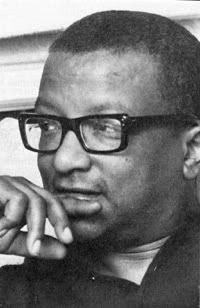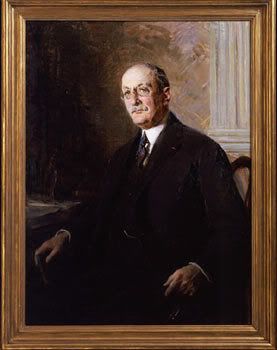Monday, November 29, 2010
"Barrett's Privateers" by Stan Rogers and Friends
The late Stan Rogers* - born on this day in 1949 - was an Ontario boy who caught the Maritime fever in a big way, eventually going so far as to craft songs - including Northwest Passage, The Mary Ellen Carter, and this one, Barrett's Privateers, from his 1976 album Fogarty's Cove - all of which sounded two hundred years old the first time they were played. In the best possible way, of course...
So popular is this modern-day chantey that the Canadian Navy often marches to it, and drinkers around the world are gradually discovering what drinkers in Canada have known for years - no one ever had a more rum drinking companion than a Stan Rogers song.
*He died in June 1983.
*
share on: facebook
Gratuitous Brunette: Don Cheadle
When looking for sexy, there are lots of places to look these days, it seems; when looking for sexy with substance, though, look no further than Don Cheadle...
For his Oscar-nominated performance as Paul Rusesabagina in the 2005 film Hotel Rwanda alone Cheadle has earned a permanent place in the Pop Culture Institute's Gratuitous Brunette Hall of Fame; with each new portrayal he moves higher into the firmament, where only stars of the brightest magnitude dwell.
As the films Hamburger Hill (1987) and Colors (1989) aren't the kind normally found on my radar - or at least weren't then - I had to wait to first see him on the ill-starred Golden Girls spin-off The Golden Palace, as long ago as 1992; the films Devil in a Blue Dress, The Rat Pack, and Traffic are on my radar, yet somehow the universe hasn't yet seen fit to show them to me*. Which means my admiration has grown from appearances on shallow talk shows, interviews in glib glossy magazines, and of course Paul Thomas Anderson's 70s paean-cum-porn epic Boogie Nights.
Still, all that is now in the past; in the present there are birthday wishes for Don Cheadle; as for what the future holds, well, only time will tell...
*As for Picket Fences, I swear I used to watch it, and I don't remember seeing him in it... Damn you Tom Skerritt, with your weapons-grade blue eyes and distracting mustache!
*
share on: facebook
Pop History Moment: The Death of Natalie Wood
The death of Natalie Wood is the first celebrity death I can remember clearly; as I was only 11 at the time, though, I was unfamiliar with much of her work (though I knew who she was), and aside from the inherent tragedy of it in those days I was probably more affected by the death of a pretty lady than a great artist...
 On this day in 1981 Wood and her husband Robert Wagner had moored their yacht The Splendor at Catalina Island; the three were celebrating Thanksgiving with their friend, Christopher Walken - with whom Wood was making a film called Brainstorm - when just before midnight she slipped into the water and drowned.
On this day in 1981 Wood and her husband Robert Wagner had moored their yacht The Splendor at Catalina Island; the three were celebrating Thanksgiving with their friend, Christopher Walken - with whom Wood was making a film called Brainstorm - when just before midnight she slipped into the water and drowned.
Stories differ on what happened next; some insist the threesome had been all good cheer as they spent the afternoon ashore. Others claim that Wagner, possibly jealous, argued with Wood either over the attention Walken was giving her, or vice versa.
Whether she was attempting to go ashore via dinghy when she fell into the water, or whether she clung to the dinghy in an attempt to save herself, famed coroner Thomas Noguchi found rubber under Wood's fingernails at the autopsy. He also found that she was drunk (but not overly so) at the time of death, and reasoned that had she not been wearing a heavy coat and sweater she might have survived, as she'd received no head trauma in the fall. In any event, he ruled the death an accidental drowning.
Still, a credible witness (onboard another yacht nearby) reported hearing a woman splashing around in the water for at least a half an hour that night, and also reported that her cries for help were lacklustre at best, so she assumed the woman she heard was just fooling around; only the next day did she learn, along with the world, that it was Natalie Wood she'd heard drowning the previous night.
But wait... You haven't heard the really creepy part yet: Natalie Wood had a lifelong fear of dark water and drowning, following a childhood accident in which she fell into dark water and almost drowned.
*
share on: facebook
Stories differ on what happened next; some insist the threesome had been all good cheer as they spent the afternoon ashore. Others claim that Wagner, possibly jealous, argued with Wood either over the attention Walken was giving her, or vice versa.
Whether she was attempting to go ashore via dinghy when she fell into the water, or whether she clung to the dinghy in an attempt to save herself, famed coroner Thomas Noguchi found rubber under Wood's fingernails at the autopsy. He also found that she was drunk (but not overly so) at the time of death, and reasoned that had she not been wearing a heavy coat and sweater she might have survived, as she'd received no head trauma in the fall. In any event, he ruled the death an accidental drowning.
Still, a credible witness (onboard another yacht nearby) reported hearing a woman splashing around in the water for at least a half an hour that night, and also reported that her cries for help were lacklustre at best, so she assumed the woman she heard was just fooling around; only the next day did she learn, along with the world, that it was Natalie Wood she'd heard drowning the previous night.
But wait... You haven't heard the really creepy part yet: Natalie Wood had a lifelong fear of dark water and drowning, following a childhood accident in which she fell into dark water and almost drowned.
*
share on: facebook
"Take The A Train" by the Duke Ellington Orchestra featuring Billy Strayhorn
In honour of Billy Strayhorn's birthday, and as an essential part of what's shaping up to be a very jazzy day indeed, I'm thrilled to post this clip of the man himself in action...
Here he's given the prestigious encore solo spot at a performance by the Duke Ellington Orchestra; as the big man himself looks admiringly on, Staryhorn makes his delicate way through one of the band's signature numbers, Take the 'A' Train.
*
share on: facebook
In Memoriam: Billy Strayhorn
Billy Strayhorn was only 16 when he wrote Lush Life, a song filled with the kind of world-weariness normally found in a much more experienced man; then again, being black in a white world (as well as gay in a straight one) could have that effect on a person, especially in the 1930s...
 Born on this day in 1915, Strayhorn originally wanted to enter the classical music field; that avenue of expression, though, was then strictly segregated - even more than it is now. Instead, he brought a kind of classical expression to jazz when, in 1939, he joined the Duke Ellington Orchestra, at the time the world's foremost purveyors of the form; because of Strayhorn's influence, Ellington's works may one day be studied on a par with Beethoven, Chopin, or Tchaikovsky.
Born on this day in 1915, Strayhorn originally wanted to enter the classical music field; that avenue of expression, though, was then strictly segregated - even more than it is now. Instead, he brought a kind of classical expression to jazz when, in 1939, he joined the Duke Ellington Orchestra, at the time the world's foremost purveyors of the form; because of Strayhorn's influence, Ellington's works may one day be studied on a par with Beethoven, Chopin, or Tchaikovsky.
In the more than two decades of their collaboration, Strayhorn's music, lyrics, and arrangements - and in some cases, all three, as with the band's theme song Take the A Train - became famous, while the man himself preferred to stay in the shadows and let his more flamboyant boss take the bows; Strayhorn was even said to have coached Lena Horne, behind the scenes, helping to hone her natural ability with just enough classical technique to define her signature sound. For this reason alone, he's entitled to more kudos than we can ever give him.
Strayhorn's circumspection, naturally, was born out of the homophobia of the times; living openly with Bill Grove, as he did, probably cost Strayhorn a career away from the safe confines of his protector, mentor, and friend Duke Ellington. Yet, in his shy way, Billy blazed two equally important trails...
Before there was a civil rights movement Strayhorn was involved in one; in fact, he was one of a pair of gay men whose vision informed that of Dr. Martin Luther King, Jr. (the other being Bayard Rustin), and probably kept the early civil rights movement from being as homophobic as it might otherwise have been. So, too, before there was a gay rights movement, Strayhorn was the one gay man even the most homophobic person could own up to liking, and his modest good nature (as much as his talent) likely made him the most respected gay man of his times.
*
share on: facebook
Remembering... Cass Gilbert
Although he is most often associated with the many Beaux-Arts gems he contributed to an earlier incarnation of the Manhattan skyline, Cass Gilbert (born this day in 1859) got his start in St. Paul; that city's Minnesota State Capitol (begun in 1895) is considered one of his earliest triumphs.
 Yet the whole time he was building palace after palace along Summit Avenue in St. Paul, Gilbert was aware that enduring fame for any American architect could only come from working in one city in particular. It was one such commission, from the city in question - the Alexander Hamilton U.S. Custom House in New York - which finally brought him and his firm East.
Yet the whole time he was building palace after palace along Summit Avenue in St. Paul, Gilbert was aware that enduring fame for any American architect could only come from working in one city in particular. It was one such commission, from the city in question - the Alexander Hamilton U.S. Custom House in New York - which finally brought him and his firm East.
While Gilbert's first job in the metropolis had been the relatively modest Broadway-Chambers Building at 277 Broadway he soon compiled an impressive series of edifices to his credit; the man many consider to be the 'Father of the Skyscraper' could have asked for no better mother to help birth and nurture his particular vision of urbanism than Manhattan.
Over the next thirty years Gilbert sent one tower after another into the skies over the city, buildings so beautiful that even now, even as they are being crowded out by generic glass towers, they still inspire the same awe they did in the optimistic 1910s and 1920s. Arguably the finest of these is the Woolworth Building (1913), although surely the mammoth New York Life Insurance Building (1926) comes a close second.
Gilbert's last commission - the US Supreme Court building in Washington, DC - was completed a year after his May 1934 death by his son.
*
share on: facebook
While Gilbert's first job in the metropolis had been the relatively modest Broadway-Chambers Building at 277 Broadway he soon compiled an impressive series of edifices to his credit; the man many consider to be the 'Father of the Skyscraper' could have asked for no better mother to help birth and nurture his particular vision of urbanism than Manhattan.
Over the next thirty years Gilbert sent one tower after another into the skies over the city, buildings so beautiful that even now, even as they are being crowded out by generic glass towers, they still inspire the same awe they did in the optimistic 1910s and 1920s. Arguably the finest of these is the Woolworth Building (1913), although surely the mammoth New York Life Insurance Building (1926) comes a close second.
Gilbert's last commission - the US Supreme Court building in Washington, DC - was completed a year after his May 1934 death by his son.
*
share on: facebook
"Feels So Good" by Chuck Mangione
Birthday wishes go out today to jazzy flugelhorn player Chuck Mangione, who in 1978 scored a major hit with Feels So Good; an abbreviated version of the nearly ten minute song went all the way to number 4 in the United States, and today makes an effective short-hand for anyone - from sitcom writers to indie auteurs - seeking to evoke the Seventies with just a few notes.
*
share on: facebook
POPnews - November 29th
[The animation! That music! Those graphics!]
1777 - When San Jose was founded by José Joaquín Moraga - as el Pueblo de San José de Guadalupe - it was the first civilian settlement, or pueblo, in Alta California.
1781 - On orders of Captain Luke Collingwood the crew of the slave ship Zong murdered 133 sick and dying Africans they were holding captive by dumping them into the sea so that they could later claim the insurance on them; before he could face justice, though, Collingwood died of the disease that had been ravaging the ship throughout the entire voyage.
1807 - The Portuguese Royal Family fled Lisbon for their richest colonial holding - Brazil - a day ahead of the French troops of Napoleon Bonaparte.
1830 - An armed rebellion now known as the November Uprising - which was waged against Russian rule in Poland - began.
1845 - The Sonderbund or 'separate alliance' - formed by the union of Swiss cantons Lucerne, Fribourg, Valais, Uri, Schwyz, Unterwalden and Zug - was defeated by the joint forces of the remaining Swiss cantons under General Guillaume-Henri Dufour, ending a 26-day civil war in Switzerland.
1847 - Missionaries Dr Marcus Whitman, his wife Narcissa, and 15 others were killed by Cayuse and Umatilla Indians at the Whitman Massacre, causing the Cayuse War.
1850 - A treaty known as the Punctation of Olmütz was signed in Olmutz (now known as Olomouc) following which Prussia abandoned the Erfurt Union and offered diplomatic capitulation to the Austrian Empire, which then took over the leadership of German Confederation.
1864 - During the Indian Wars Colorado volunteers led by Colonel John Chivington massacred at least 150 Cheyenne and Arapaho noncombatants at the Sand Creek Massacre in the Colorado Territory.
1877 - Thomas Edison demonstrated his new invention, the phonograph, for the first time.
1890 - The Meiji Constitution went into effect in Japan and the country's first Diet convened.
1893 - Ziqiang Institute, today known as Wuhan University, is founded by Zhang Zhidong, governor of Hubei and Hunan Provinces in late Qing Dynasty of China after his memorial to the throne is approved by the Qing Government.
1915 - Fire destroyed most of the buildings on California's Santa Catalina Island.
1944 - The first surgery (on a human) to correct blue baby syndrome was performed by Alfred Blalock and Vivien Thomas.
1945 - The Federal People's Republic of Yugoslavia was declared.
1961 - As part of Project Mercury's Mercury-Atlas 5 mission Enos, a chimpanzee, was launched into space; the spacecraft orbited the Earth twice and splashed-down off the coast of Puerto Rico.
1963 - President Lyndon Johnson appointed Chief Justice of the United States Earl Warren to head the Warren Commission, whose investigation into the assassination of President John F. Kennedy produced some interesting results.
1965 - The Canadian Space Agency launched the satellite Alouette 2.
1972 - Nolan Bushnell (co-founder of Atari) released Pong as an arcade game at Andy Capp’s Tavern in Sunnyvale, California.
1975 - Race car driver Graham Hill died when the Piper Aztec aircraft he was piloting clipped some trees while landing at a golf course in north London; also dead in the crash were Embassy Hill team manager Ray Brimble, mechanics Tony Alcock and Terry Richards, up-and-coming driver Tony Brise and designer Andy Smallman.
*
share on: facebook
Subscribe to:
Comments (Atom)


